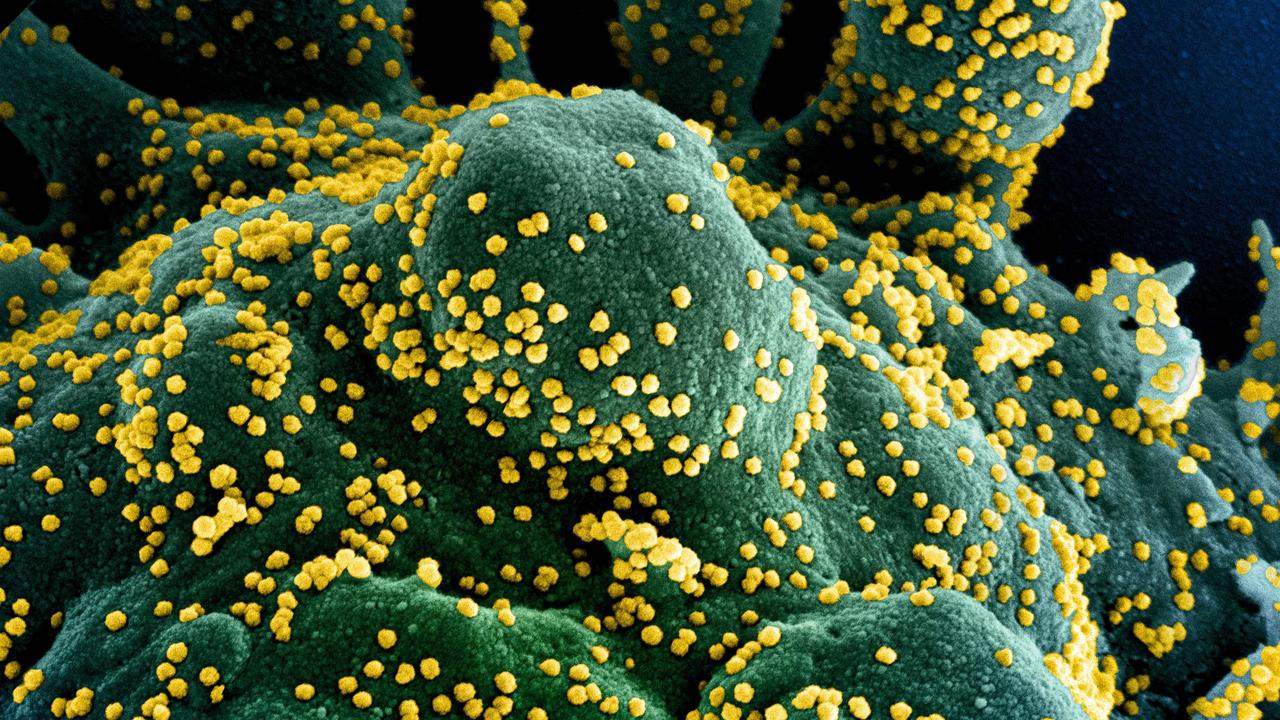Doctor calls the Covid BA.5 ‘worst variant we have seen so far’
Calling the new Covid strain the “worst variant we have seen so far”, a doctor fears the transmissibility and severity of the virus is akin to a much deadlier variant.
Experts believe people who contract the BA.5 strain of Covid-19, one of the subvariants triggering a third wave of the virus in Australia, could be sicker with the virus for longer.
Dubbing it the “worst variant we have seen so far,” esteemed American physician Dr Eric Topol expressed concern over its “severity of immune evasion and transmissibility”.
Sharing his observations in his subscription newsletter, Ground Truths, Dr Topol quoted findings released in a new report from Australia’s Kirby Institute.
While the report has yet to be peer-reviewed, it found that BA.5 had alarming similarities with the Delta strain, which produced more severe symptoms and higher rates of hospitalisation.
“The ability to infect cells for BA.5 is more akin to Delta than the previous Omicron family of variants,” he wrote.
BA.5 is now >65% of new infections in the United States https://t.co/jjl2AnwOWX and we even got a @CDCgov public warning about it pic.twitter.com/E4E0lTm3Tc
— Eric Topol (@EricTopol) July 12, 2022
Stream the latest news on COVID-19 with Flash. 25+ news channels in 1 place. New to Flash? Try 1 month free. Offer ends 31 October, 2022 >

The research also indicated that BA.5 infection contained a “similarity of virus high loads for BA.5 and Delta”.
Anecdotally, he said this could also explain why people who are infected with BA.5 take “very long periods to test negative … often exceeding 10 days,” he wrote.
Despite this, Dr Topol said it was too early to confirm if the BA.5 variant produced more severe disease, saying it was “still unclear, but possible given its Delta-like cell infectivity feature”. However, he said initial reports revealed it was likely.
Referring to the virus’ tropism – also known as its ability to infect cells and thus cause more severe disease – Dr Topol noted that the subvariant had a “far better ability to get into cells”.
“[This may] help explain why this version of the virus has caused a lot of trouble – more than other Omicron subvariants,” he wrote.

‘Particularly unique and different’
Along with the BA.4 strain, health experts have expressed major concern over the “highly infectious” BA.5 subvariant.
In early July, Health Minister Mark Butler warned that it appeared people who were vaccinated from the virus, or had immunity from contracting the virus, were “still susceptible”.
“They’re even more infectious than the earlier subvariants that drove the summer wave, the BA.1 wave in January and the BA.2 wave in April and May,’’ Mr Butler said.
“What is particularly unique and different around BA.4 and BA.5, they’re very good at evading people’s immunity.”

‘Facing a really big threat’
Similar to global trends, Australia has seen a significant jump in Covid cases over past weeks. On Tuesday, the Australian Department of Health and Aged Care recorded 41,335 new cases, with an estimated 314,075 total active cases in the country. In comparison, a week ago on July 5, Australia reported 36,445 new infections nationally, with an estimated 268,697 active cases.
This daily 📅 infographic provides a quick view of the current coronavirus (#COVID19) situation in Australia 🇦🇺
— Australian Department of Health and Aged Care (@healthgovau) July 12, 2022
Find out more here 💻 https://t.co/YcsPBOTHZDpic.twitter.com/k3maghhm4A
According to the World Health Organisation (WHO), Covid cases internationally have jumped by 30 per cent in the last two weeks, due to eased measures on monitoring and protecting against Covid and subvariants which appear to be more infectious.
“Subvariants of Omicron, like BA.4 and BA.5, continue to drive waves of cases, hospitalisation and death around the world,” WHO director-general Tedros Adhanom Ghebreyesus said.
“Surveillance has reduced significantly – including testing and sequencing – making it increasingly difficult to assess the impact of variants on transmission, disease characteristics, and the effectiveness of countermeasures.”

Speaking about the renewed danger of Covid, Australian Medical Association vice president Chris Moy said hospitals were “facing a really big threat”.
“We’re extremely worried about facing BA.4 and 5 Omicron subvariants, which are more infectious, cause more reinfections and severe disease, because it looks like they’re more likely to go down into your lungs,” he told the ABC.
He feared the BA.5 variant could peak at levels similar to the Omicron strain in January,
“More people are ending up in hospital just when our hospitals are absolutely chock-a-block full because they’ve been neglected for so long,” he said.
“We’re just about to enter a much worse phase.”






